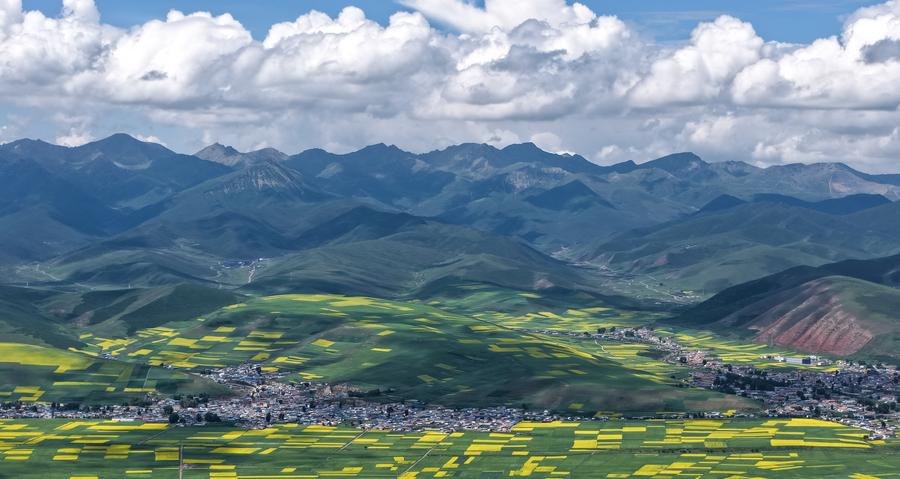This aerial drone photo taken on July 18, 2025 shows a view in Menyuan Hui Autonomous County, northwest China's Qinghai Province. (Xinhua/Qi Zhiyue)
About 10 years ago, people in Bianmagou Village, northwest China's Qinghai Province, would have never imagined that they could shake off poverty by taking advantage of flowers along the dirt and bumpy roads in the village.
Located in Shuobei Tibetan Township, Bianmagou is over 50 kilometers from the city center of provincial capital Xining and has long been a poor village with residents primarily being minority groups, including Tibetan and Mongolian ethnicities.
With an average altitude of 2,800 meters and cold climate, crop yields here were very low. As there were no other income sources, most villagers had to seek jobs as migrant workers in cities far from their hometown, said Guo Chunhui, Party Secretary of Shuobei Tibetan Township.
In 2015, Bianmagou welcomed a group of foreign tourists, who expressed their admiration for the village's ecology and the blooming flowers. They noted that enhancing infrastructure and services could attract even more visitors to the area.
"These visitors' words planted the seeds in the hearts of the villagers to develop rural tourism, and we started taking action that same year," said Li Zhenhai, general manager of the village's scenic spot.
Supported by the local government, Bianmagou villagers planted alpine flowers such as lupins, chrysanthemums and irises, and ornamental tree species like Qinghai spruce and crabapple trees.
By the end of 2016, the construction of a scenic spot was finished, and the villagers named it "the Sea of Flowers," which spans 800 mu (about 53 hectares). Since then, Bianmagou has attracted a steady stream of travelers.
